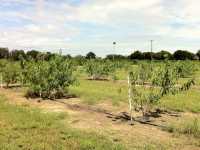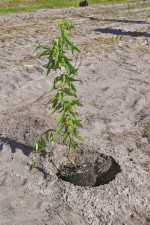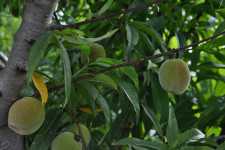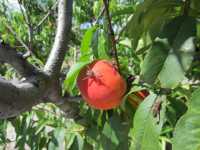5 Pointers To Pump Up Your Peach Production

As more acres go in the ground, Florida peach growers are learning important steps that can be taken to improve production and quality. Here are five things you can do to pump up your production, according to Mercy Olmstead, UF/IFAS Extension fruit specialist and assistant professor.
1. Choose good quality plants with nematode-resistant rootstocks. Trees budded on Flordaguard rootstock that are outcrosses get infected with peach root-knot nematode 12 to 18 months after planting. The tree on the right was an outcross with heavy nematode galling on the root system.
Check out more tips on the following pages.
2. Make Plant Health A Priority

Monitor soil and plant nutrition levels with an annual soil and leaf tissue test. This is especially important when establishing an orchard as some soil elements, like increasing pH, are easily done before planting.
3. Beef Up Your Fruit Thinning

Proper fruit thinning distributes resources to fewer fruit, increasing fruit size. Fruit should be spaced six to eight inches apart for most peach varieties.
4. Monitor Peach Diseases

Stay on top of peach diseases like peach scab and peach leaf rust. Peach scab (pictured right) can negatively affect your pack-out rate due to skin blemishes, while peach leaf rust (pictured left) can cause early defoliation and bloom. This early bloom can reduce cropload in the following spring.
5. Improve Your Peach Crop’s Chances With IPM

Utilize integrated pest management techniques to avoid pest outbreaks. Peach pests such as lesser peachtree borer, blue-green weevils, and Diaprepes root weevil can damage peach tree structure. Other insects like thrips, stinkbugs, and plum curculio (for North Central Florida) can damage fruit, rendering it unfit for sale. Scouting for these pests can help to save money by applying chemicals only when the pest is present.









